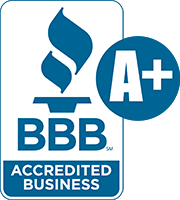How to Build a Custom Shower Enclosure

Design and Construction Considerations for
a Frameless Glass Shower Enclosure
Door Swing
Typical doors are 28” to 30” wide. We generally try to avoid doors that are less than 24” or wider that 34”. Doors swing 180 degrees, both in and out. You need to plan enough room to avoid obstacles such as toilets, vanities or towel bars. On the inside of the shower, make sure there is clearance for fixtures such as rain heads. It is usually recommended that the door swing on the same side of the shower as the shower controls. This way the door can open out to turn and enter the shower and provide the shortest reach to the controls. When exiting the shower, the door pulls in and drips into the base, not on the floor.
Fixed Panels
Fixed panels that are in the same plane as the door are considered “inline” panels. They can be full height or notched over benches, notched over pony walls or raked.
If a panel needs to be notched to go over a bench or up on a pony wall, it is also called a “step-up” panel. If this is part of your design, you need to make sure that the leg on the panel is at least 4” and the notch is at least 2.5” deep. Call us to discuss this if you have any questions.
Panels that are at 90 degrees (or a custom angle) to the front of the shower are called “return” panels. At the corner where the return panel meets the inline panel we use a miter joint and silicone for stability. Sometimes it is also necessary to use a small clamp on the top of the glass at this intersection for added stability.
There are two basic options for attaching fixed glass panels to the tile, channel and clips. Channel is sleek and provides an unobstructed look to the glass. Channel also provides a great water seal and does not require drilling into the water barrier at the curb. Clips are stylish and techie. Clips add a bit of cost due to the additional glass fabrication and installation time they require. Some designs incorporate clips on the side and channel at the bottom for a great look with better long-term water performance. See Channel vs Clips for a complete summary of these two options.
Height
We generally recommend that the height of the shower enclosure is slightly above the shower head. When the door height reaches 84” weight may become an issue. You also need to consider leaving enough space between the top of the enclosure and the ceiling to allow steam to escape. Leaving at least 6” of space is a good rule of thumb.
Door Swing
Typical doors are 28” to 30” wide. Doors swing 180 degrees, both in and out. You need to plan enough room to avoid obstacles such as toilets, vanities or towel bars. On the inside of the shower, make sure there is clearance for fixtures such as rain heads.
Hinging, Backing and Door Support
The sleekest and most cost-effective design is to hinge the door on the wall. Frameless doors are heavy and require structural support (studs) behind the tile if the door hinges on the wall. Make sure that there are double or triple studs for backing behind the tile where the glass door will meet the tile. This is usually the center of the curb. This can also be accomplished by installing a 2X6 “strap” between the studs centered at 12” above the curb and 12” below the top of the glass. This will ensure proper bite for the hinge screws and greatly lessen the chance of cracking tiles during installation.
In the case of installing a new door into the existing tile, plugs can be used to attach the hinges. Plugs work most of the time, but can cause tiles to crack.
If you do not hinge to the wall (hinge to glass), your enclosure will require a header to support the weight of the door swing. An alternative to a header is to run the panel that is supporting the door to the ceiling, in order to provide stability for the door. This is commonly done in a steam shower.
Tile
The wall tile should ideally extend at least slightly beyond the shower curb. If the curb itself is tile or stone, it should be slightly slanted toward the inside of the shower to assure proper water control. Uneven tile situations such as “bellies” and “smiles” will create issues with gaps in the shower installation. If using decorative tile that is highly textured, such as an accent strip, the decorative tile should stop or “pause” where the door hinges will go. If you are using glass tile, which is very difficult to drill, it is a good idea to leave out the tiles where the hinges will go. We install the hinges on shim plates and the final tiles go around the plates after the shower is installed.
Measuring Tolerances
Despite the best efforts of your tile guy, there will likely be some small outages in plumb and level in your finished tile. This is why each shower enclosure is custom-made to exactly fit the opening. This is done by laser measuring the opening to a tolerance of +/- a 1/16 of an inch and cutting glass out-of-square if necessary. Measurements for the glass cannot be made until the tile is installed.
Hardware and Finishes
Pull hardware comes in several different styles. “D” pulls are simple and sleek. Ladder pulls, or square pulls are also available. Or, for the ultimate minimalist, we can provide a 1.5” polished hole or cut-out in the glass in lieu of a pull. We also offer several hardware accessories such as towel bars, knobs, robe hooks.
Several hardware finishes are available. Our standard finishes are Chrome, Brushed Nickel, Oil Rubbed Bronze and Matte Black. We also carry several premium finishes such and bronzes and brass finishes. Come into the showroom and see for yourself.
Glass Options
The vast majority of shower enclosures we install are clear glass. This is because clear glass allows you to show off your (probably new) tile work and makes the bathroom look bigger. Several obscure glass options exist such as Rain, Glue chip, Satin or Delta Frost. We also offer Starfire, which is an ultra-clear low-iron glass. Come into our showroom to see the options.
Glass Coating
EnduroShield is a product that is put on the glass in the fabrication plant. This coating makes the glass easier to clean and makes the water sheet off more quickly so fewer water spots are left behind. It is especially helpful if your house is on well water because your water has high mineral content. It has a 10-year warranty.
Glass Attachment
There are 2 basic options for attaching fixed glass panels to the tile, channel and clips. Channel is sleek and unobstructed and provides a great water seal. Clips are stylish and techie. Clips add a bit of cost due to the additional glass fabrication they require. See Channel vs Clips for a complete summary of these 2 options.
About Hillcrest Glass
Hillcrest Glass is a full-service glass shop located in Longmont, Colorado. We have been providing glass in Longmont, Boulder, and nearby communities on the Northern Front Range of Colorado since 1969. We’ve been locally owned since the beginning.
Proud member of:



